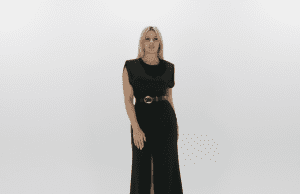
Mercedes Blanche: Moving to Hollywood (One Year Later)
One year after our first interview, rising social media and acting star, Mercedes Blanche, talks to us about her experience moving from Canada to Hollywood in the hopes of chasing her dreams.

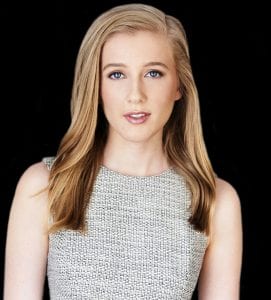
When producing a video, commercial, film, etc. there are typically three main phases involved in completing the project. The first of which is pre-production. It’s during this vital stage of the project that every element is organized prior to filming. Author’s don’t begin writing their book without a meticulous roadmap for the story. The same can be said of us! You should never begin shooting a project without a thorough plan of action.
In this article and accompanying video, we’ll chat about some important pre-production elements that shouldn’t be overlooked. Whether you’re a potential client or simply interested in learning more about video production, we’ve got a ton of great info to share.
First and foremost, we will always schedule creative brainstorm meetings! Remember, most elements of production are incredibly collaborative. We set aside plenty of time to brainstorm with our client and/or team to discuss visions and ideas. Try analyzing videos and films that inspire you. Developing a strong concept is the key to producing a strong project. Everyone on the team should head into production with a unified vision for the project.
We typically use a Creative Brief for commercial shoots with clients to ensure everyone is on the same page. Using an audio recording device to record meetings can be a helpful reference tool during brainstorm sessions as well.
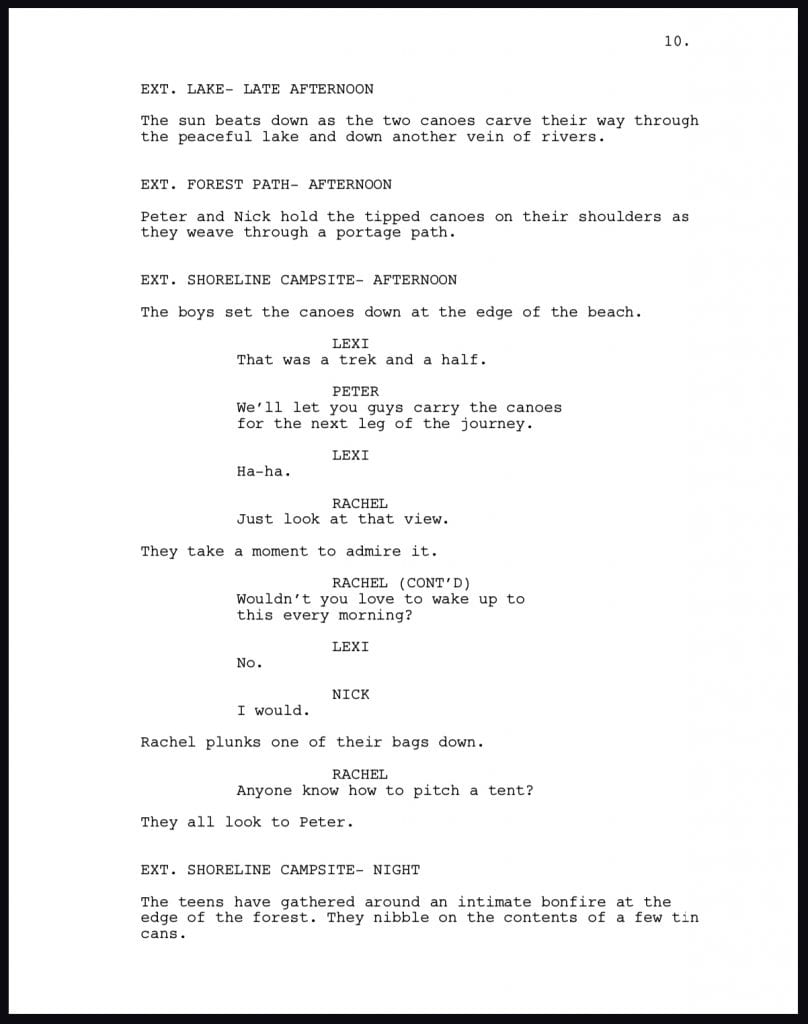
If a project requires a script…that’s a wonderful place to start. We might need to hire a professional writer to help with the project. As could be expected, most film and television projects require scripts prior to planning anything else out for the shoot.
A basic script is important for simple, low-budget videos and feature films alike. Having a script with camera movements blocked out and action planned out will save time and expenses on your shoot.
Scripts are constantly changing and evolving. In fact, I was once acting in a commercial for a popular car brand and the entire scene was rewritten to account for the torrential rain we experienced all day. Don’t panic if some adjustments need to be made to a script during the production phase of your project. Happens all the time.
With that being said, not every project needs a script. A lot of promotional and corporate videos don’t require one. The dialogue in most testimonial videos is authentically relayed and some voiceover narration is written after the commercial is produced. It changes from project to project.
But that doesn’t mean those projects are any less planned out!!
Camera operators aren’t often present for the brainstorming meetings. They are typically hired for production. Providing them (and the rest of the team) with a detailed storyboard can keep visions from getting muddied. The storyboard is a visual representation of how each and every shot is envisioned.
Storyboards can also help clients to envision ideas! It can be difficult to translate images into words, so hiring an artist to work alongside the team through pre-production can be beneficial to everyone.
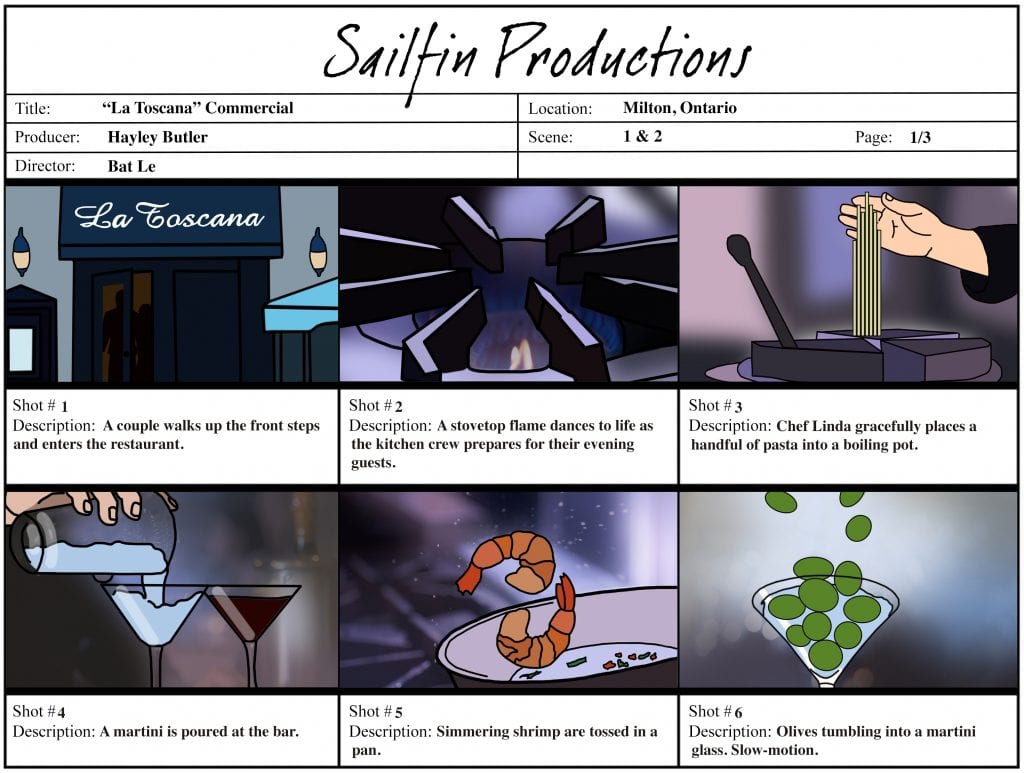
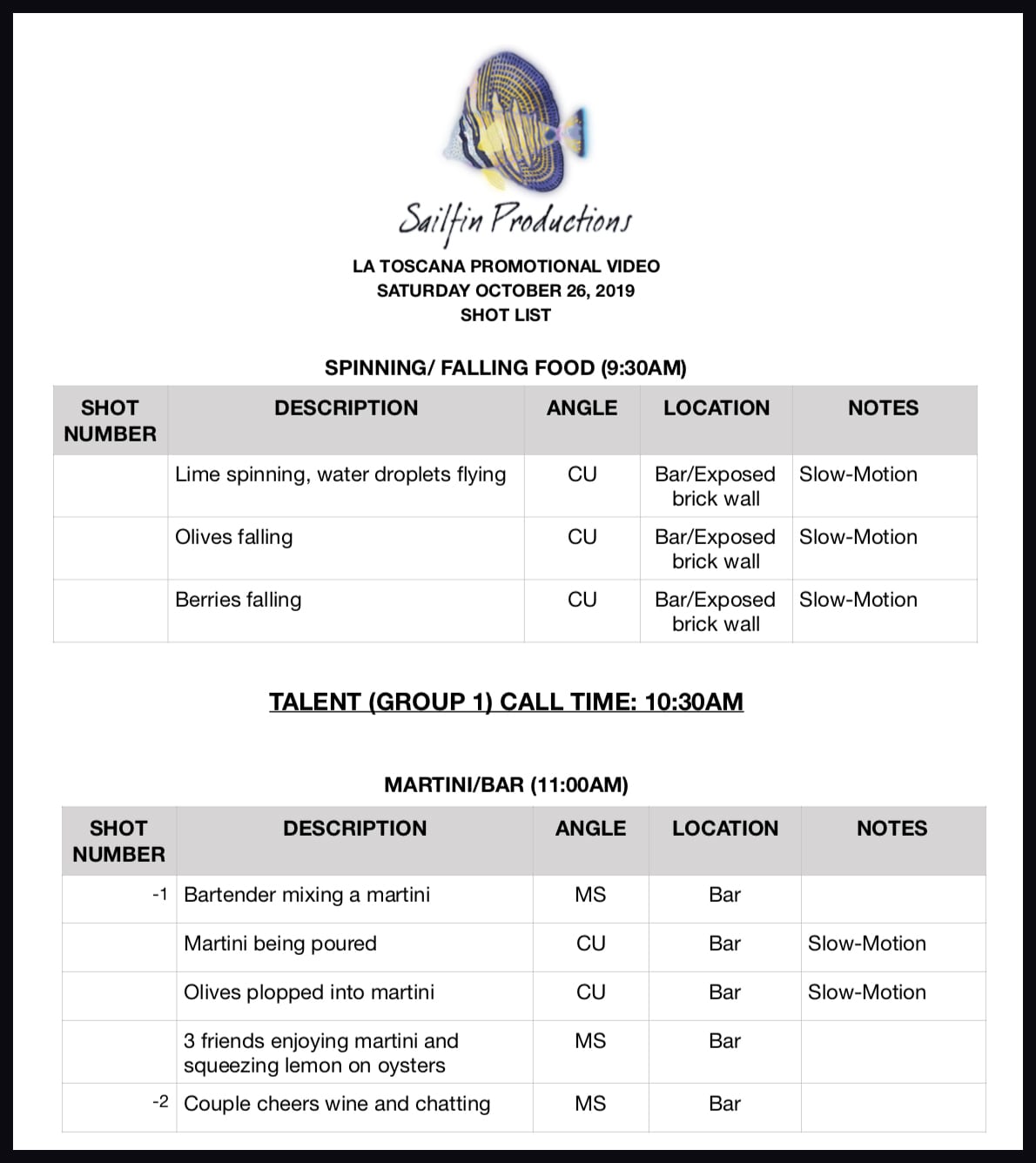
We shot list 100% of our productions. This is another great tool for documenting each shot envisioned for the project. Instead of using visuals, a shot list requires a detailed description of each shot. This document is followed while shooting on set to ensure no shots are missed.
If a budget doesn’t permit hiring a storyboard artist, this is the way to go! In fact, even if you have a storyboard- you should have a shot list for your camera crew. There are a variety of shot list templates out there, but this is what we typically do…
Most shot lists don’t include any scheduling information. However, we actually find it quite helpful to include the basic schedule on the shot list too. It helps everyone to stay incredibly aware of timing and ensures the shoot never runs late.
When working on larger projects, we always work off a schedule. Remember…time is money, so we have to keep every project on time to keep it on budget. As a producer, that’s a huge priority.
Scenes are rarely filmed in chronological order, so the crew needs a schedule to stay in the loop. The shooting schedule should include any key information for the day, including:
In the film world, pages are split into 8ths. For example, a smaller scene may be 2/8 pages. That’s not even half a page! A much bigger scene might be 2 4/8 pages. That’s two and a half pages…a much bigger scene.
Keeping track of the scene length this way can help with timing and scheduling out the day.
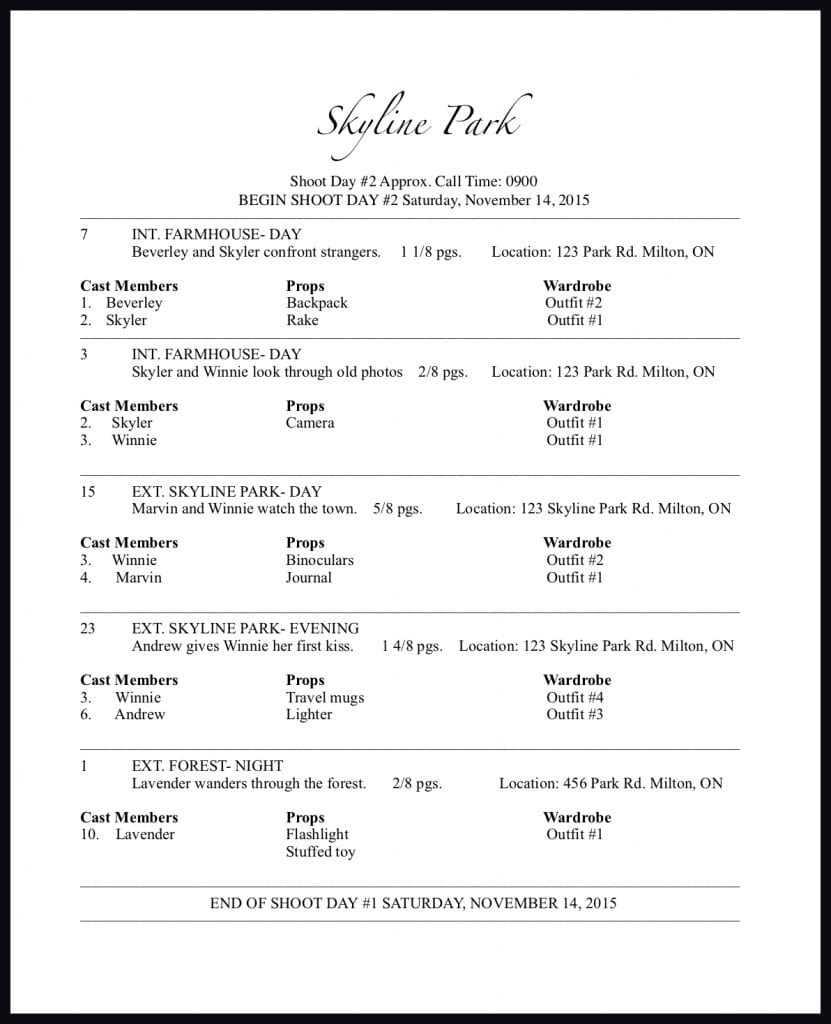
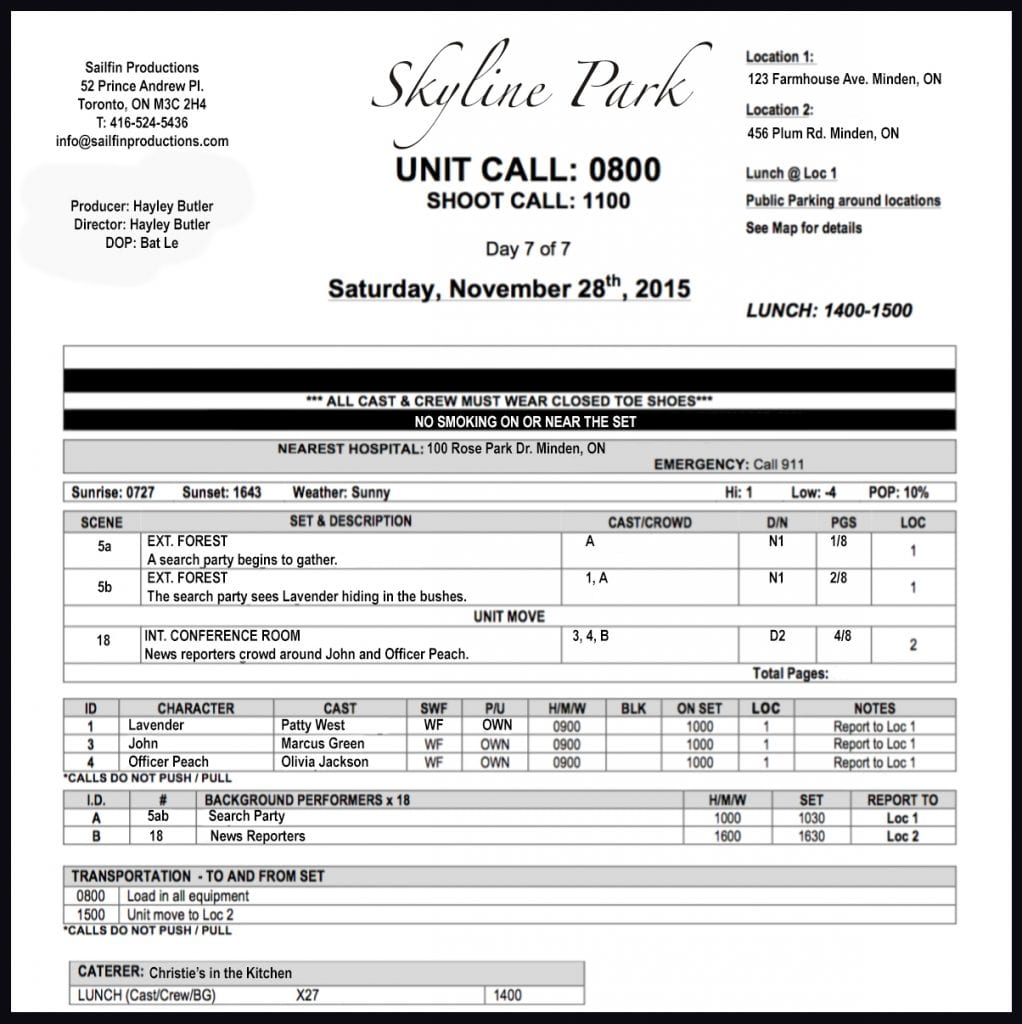
The call sheet is another schedule-related document issued to cast and crew prior to a day of shooting. We normally use call sheets on larger projects (with outsourced crew and hired talent). It’s a great tool for organizing and keeping everyone involved in the production updated on scheduling.
The call sheet should include:
Prior to production, it’s important that we take a look at the shooting location. Depending on the scope of the project, it can be beneficial for us to hire a camera operator to come along on this excursion.
During the scout, we take note of lighting, angles that work best in the space and any issues the location might pose. Is there a train that goes by every hour? Can loud air-conditioning units be turned off? These are all questions that should be answered BEFORE shooting.
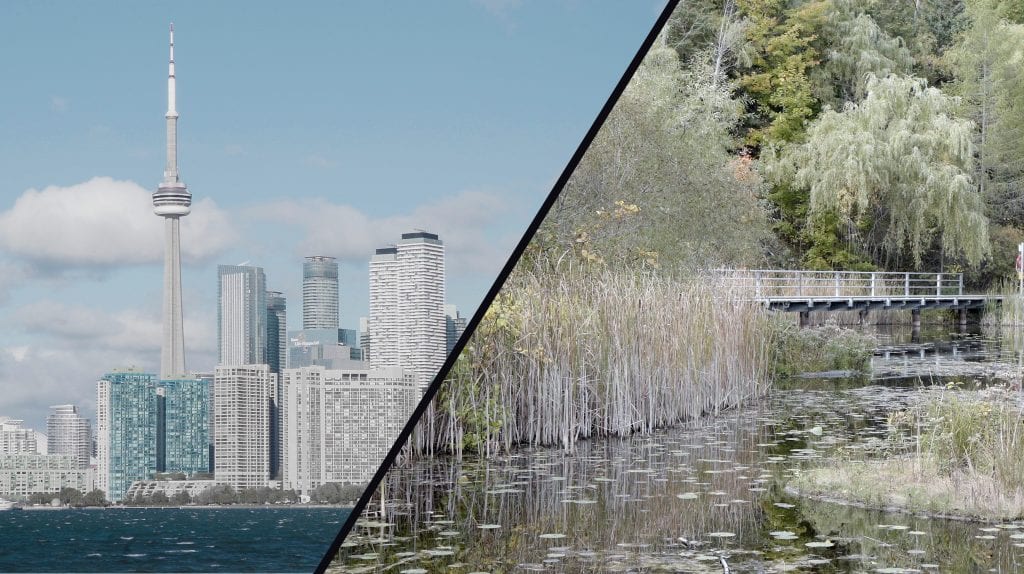
As a previous actress myself, this is one of my favourite parts of pre-production! Most commercials require talent to portray characters. In fact, any time you’re trying to sell a product/service, having talent in the production makes it far more appealing to potential customers.
Would you want to visit a restaurant with no people dining in it? Exactly. Actors enjoying the dining experience in the commercial for a restaurant is a selling feature!
We can find talent in a variety of ways. Websites like Mandy.com are the perfect place to search for talent on lower budget projects. Bigger productions might require hiring talent from an agency. We’ll also be sure to audition potential actors to see if they fit the role!
On the other hand, I’ve shot for many companies that prefer to showcase their own clients in their videos. That’s fine too! I’ll be talking all about directing non-actors in a future post.
Not every project requires outsourced crew. But most larger scale productions certainly do. If you’re an aspiring filmmaker, I recommend doing some research and learning about the professionals in your area. Watch their demo reels and spend some time speaking with them (over the phone or in person) to see if they’re a good fit for your team.
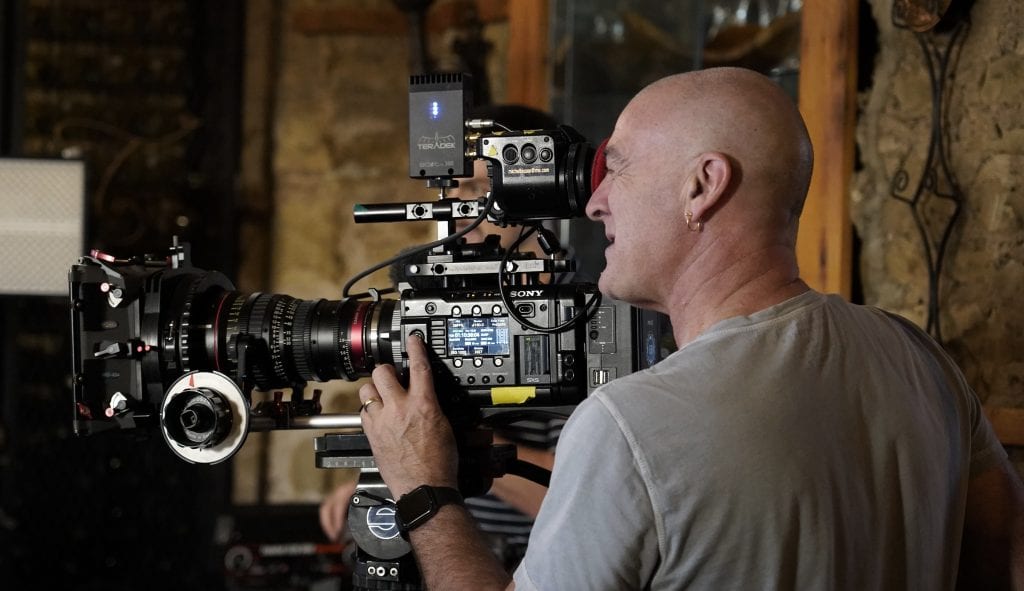
There’s a ton of work that goes into pre-production, so don’t overlook it. The more organized a production is beforehand, the far smoother shooting will be. As Alfred Hitchcock once said, “We’ve made a wonderful film. Now all we have to do is shoot it.”
Follow us on Facebook, YouTube, and Instagram to stay updated on the Sailfin crew!

One year after our first interview, rising social media and acting star, Mercedes Blanche, talks to us about her experience moving from Canada to Hollywood in the hopes of chasing her dreams.

Tamara Almeida shares her incredible transformation from sales representative to Canadian acting star.
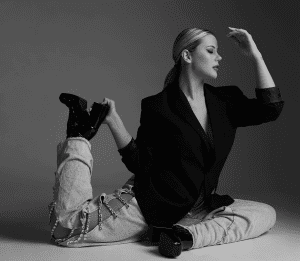
Mercedes Blanche, TikTok star, social media influencer and actress shares her experience going viral and breaking into the entertainment industry.
Or send us a message
Copyright © 2025 Sailfin Productions. All rights reserved. • Privacy Policy